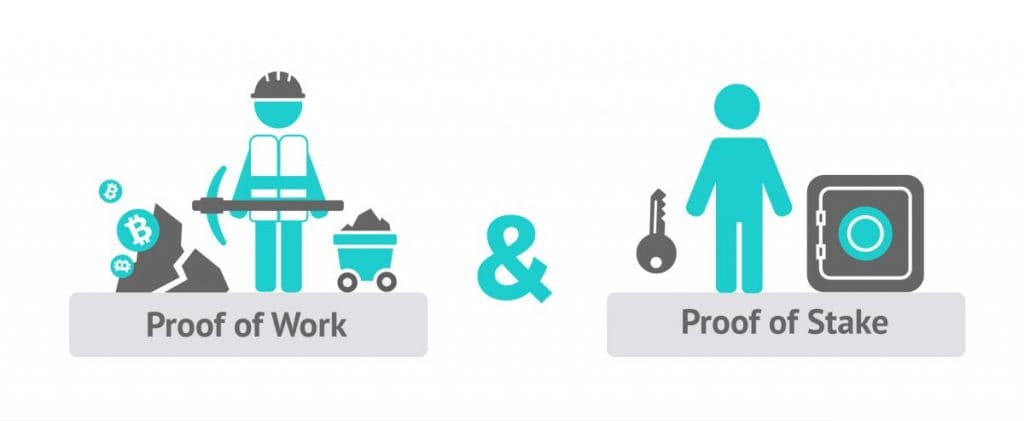Proof-of-Stake

What is Proof-of-Stake?
Basically, Proof-of-Stake, or in simpler terms, proof of participation, is a consensus model.algorithm This model governs the process of transaction validation on the blockchain. Participants can 'stake' coins by locking them up, and the system will randomly pick one of the stakers to validate the next block, earning transaction fees in the process. Generally, the likelihood of being selected correlates with the number of coins held – meaning the more coins you possess, the better your odds are for getting the chance to validate the next block. PoS systems include various mechanisms and have different forms. One key advantage of PoS over the Proof-of-Work framework is its significantly lower energy requirement.
What sets it apart from Proof-of-Work? The two are fundamentally distinct consensus algorithms for blockchain. In PoS, validators are chosen based on coin holdings, while PoW validators require considerable computational power to tackle complex mathematical problems for transaction validation. While PoW is notorious for its energy consumption, PoS offers enhanced security from certain cyber threats and is less energy-intensive.bitcoin they “stake” ascollateral Every blockchain operates on a consensus mechanism that helps nodes agree on the integrity of data. Validators are generally selected through the Proof-of-Stake method based on their ownership of native tokens. A validator needs a stable internet connection and must deposit tokens into a compatible wallet for staking purposes. Various factors, such as the amount and duration of staked tokens, alongside a random function, assist in the validator selection process. Some blockchains introduce unique variants of proof of stake, like Delegated PoS or Pure PoS, by implementing a minimum staking amount.

Understanding of Proof-of-Stake
When implemented correctly, Proof-of-Stake is considered a secure and reliable consensus mechanism. It offers several security features, including protection against Sybil attacks, safeguarding against over 50% of cyber threats, and other vulnerabilities prevalent in blockchain networks. Nonetheless, numerous factors can influence the security and robustness of a PoS system, making it crucial to consider these aspects when evaluating the security of a PoS-based blockchain.staking Recent Tweets About Proof-of-Stake
While it’s crucial for blockchain integrity, we must also explore more energy-efficient alternatives.
Vitalik Buterin’s book on the 'Proof of Stake' concept is set for release on September 27 in both digital and print editions.
Latest news about Proof-of-Stake
- Ropsten, the oldest test network for Ethereum, has successfully transitioned from proof of work to proof of stake (PoS), marking a pivotal shift toward better energy efficiency and reduced environmental impact. This merge exclusively affected the consensus layer and is anticipated to cut Ethereum's energy usage by a staggering 99.9%. The process aims to wrap up by late August, while transaction speed and gas costs are projected to remain stable. Vitalik Buterin, co-founder of Ethereum, expressed enthusiasm regarding the progress and plans for two additional testnet merges on Goelri and Sepolia before a comprehensive merge occurs. The positive results of the Ropsten merge signal Ethereum's potential long-term success and sustainability, possibly giving it an advantage over rivals like Solana. Just a reminder, the information on this page is not meant to be interpreted as legal, financial, investment, or any other form of advice. It’s vital to invest only what you can afford to lose and to seek professional financial guidance if you encounter uncertainties. For more details, we recommend checking the terms and conditions, as well as the help and support resources available from the issuer or advertiser. MetaversePost strives for precise and impartial reporting, noting that market conditions can change without any notice.
- Ethereum Victoria writes on a variety of tech subjects, including Web3.0, AI, and cryptocurrencies. Her extensive background enables her to create insightful articles that engage a broad audience.mainnet Cryptocurrencylistings.com Launches CandyDrop to Simplify Crypto Access and Boost User Engagement with Quality Projects
Disclaimer
In line with the Trust Project guidelines DeFAI Needs to Tackle the Cross-Chain Challenge to Realize Its Full Potential







